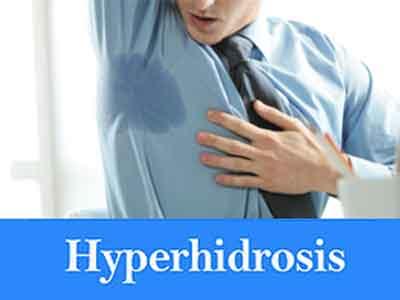- Home
- Editorial
- News
- Practice Guidelines
- Anesthesiology Guidelines
- Cancer Guidelines
- Cardiac Sciences Guidelines
- Critical Care Guidelines
- Dentistry Guidelines
- Dermatology Guidelines
- Diabetes and Endo Guidelines
- Diagnostics Guidelines
- ENT Guidelines
- Featured Practice Guidelines
- Gastroenterology Guidelines
- Geriatrics Guidelines
- Medicine Guidelines
- Nephrology Guidelines
- Neurosciences Guidelines
- Obs and Gynae Guidelines
- Ophthalmology Guidelines
- Orthopaedics Guidelines
- Paediatrics Guidelines
- Psychiatry Guidelines
- Pulmonology Guidelines
- Radiology Guidelines
- Surgery Guidelines
- Urology Guidelines
Botox a safe treatment option for Juvenile Plantar Hyperhidrosis

Botulinum type A toxin seems to be a safe secondary treatment option for plantar hyperhidrosis in adolescents aged 12 and older, reports a study published in the journal Pediatric Dermatology. A dose of 75-100 U per sole resulted in a good therapeutic effect of variable duration in most patients. There were no severe side effects.
Plantar hyperhidrosis can have severe social effects on children and adolescents. Therapeutic options include antiperspirants and surgical interventions (eg, sympathectomy). Botulinum type A toxin is approved for axillary hyperhidrosis in adults only.
Matthias K. Bernhard and his associates conducted a study to determine the effect and safety of botulinum type A toxin in plantar hyperhidrosis in juvenile patients.
Read Also:Qbrexza -First drug for treating Primary Axillary Hyperhidrosis
Children and adolescents with idiopathic focal plantar hyperhidrosis were treated with 50‐100 U of botulinum type A toxin per sole. Local anesthesia was provided using the topical eutectic mixture of local anesthetics cream and ice, in combination with midazolam as an anxiolytic... Fifteen patients (aged 12‐17) were included in the study
Key findings:
- Best results were achieved with a dose of 75‐100 U of botulinum type A toxin per sole.
- Two patients did not benefit from the therapy, and 11 (73%) were satisfied with the results.
- Nine patients (60%) experienced pain at the injection site for a maximum duration of 3 days.
- One patient reported transient focal weakness for 4 weeks. Fifteen patients (aged 12‐17) were included in the study
Hyperhidrosis is abnormally excessive sweating that's not necessarily related to heat or exercise. One may sweat so much that it soaks through ther clothes or drips off the hands. Besides disrupting normal daily activities, this type of heavy sweating can cause social anxiety and embarrassment.
For reference log on to https://onlinelibrary.wiley.com/doi/abs/10.1111/pde.13628

Disclaimer: This site is primarily intended for healthcare professionals. Any content/information on this website does not replace the advice of medical and/or health professionals and should not be construed as medical/diagnostic advice/endorsement or prescription. Use of this site is subject to our terms of use, privacy policy, advertisement policy. © 2020 Minerva Medical Treatment Pvt Ltd